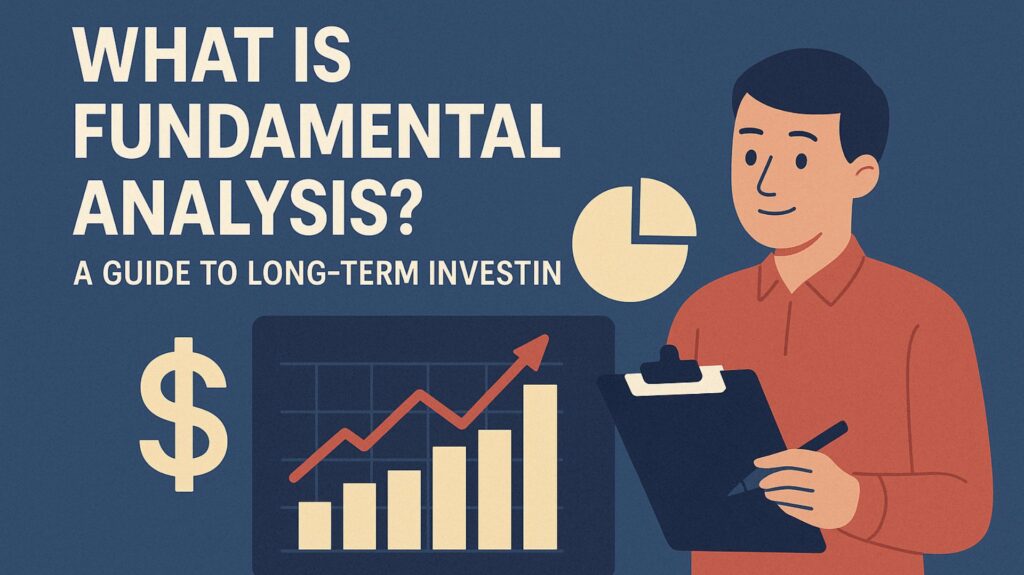
When it comes to building wealth in the stock market, successful investors don’t rely on luck. They rely on research, analysis, and strategy — and at the heart of that strategy lies fundamental analysis.
Whether you’re a beginner planning your first investment or someone looking to refine your skills, understanding fundamental analysis can be your game-changer. In this blog, we’ll break down what it is, how it works, and how you can use it to make long-term, smart investment decisions.
Fundamental analysis is the process of evaluating a company’s financial health, performance, industry position, and economic environment to determine the true value of its stock.
It answers the big question:
“Is this stock worth buying at its current price?”
The goal is to find undervalued stocks — companies that are worth more than what the market currently believes — and hold them until their true value is recognized.
To perform a complete fundamental analysis, investors typically examine:
These are the most important tools in understanding how a company is performing.
Balance Sheet – Shows assets, liabilities, and shareholder equity
Income Statement – Reveals profit/loss over a period (also called Profit & Loss statement)
Cash Flow Statement – Shows how cash is flowing in and out of the business
Look for things like:
Revenue growth
Net profit margin
Debt-to-equity ratio
Free cash flow
Ratios help you compare companies and spot red flags:
P/E Ratio (Price to Earnings): High P/E may mean overvalued stock
EPS (Earnings Per Share): Measures company’s profit per share
ROE (Return on Equity): Profitability vs shareholder investment
Current Ratio: Company’s ability to pay short-term obligations
A good product isn’t enough. A company’s leadership and vision matter too.
Ask:
Is the management experienced?
Is the business model sustainable and scalable?
Does the company have a unique advantage (a “moat”)?
Understand how the company is positioned within its industry.
Is it a market leader?
What are its biggest risks?
Who are its competitors?
Even the strongest companies are affected by the broader economy.
Inflation
Interest rates
Government policies
Global events
These affect investor sentiment and long-term growth potential.
Unlike short-term trading (which focuses on price patterns and indicators), fundamental analysis focuses on business value. Long-term investors use it to:
Buy low and hold for years
Ignore short-term volatility
Focus on consistent growth and compounding returns
Build wealth patiently
🔑 Example:
Warren Buffett famously uses fundamental analysis to find undervalued companies and hold them for decades.
Builds conviction in your investments
Reduces emotional decision-making
Helps avoid bad companies with poor financials
Supports wealth creation through long-term investing
Time-consuming
Doesn’t account for short-term price movement
Predictions are still estimates, not guarantees
But when used correctly, it’s one of the most powerful tools for long-term success.
Welcome to Trade4u, the official learning platform of Trade with Bhagyashri – where your trading journey begins with knowledge, confidence, and real market wisdom.